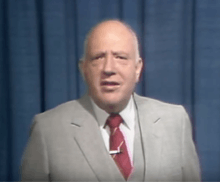Herbert Gross
| Herbert Gross | |
|---|---|
 | |
| Born |
April 2, 1929 Boston, Massachusetts |
| Fields | Mathematics |
| Institutions | |
| Alma mater | Brandeis University |
| Known for | |
| Notable awards | Doctor of Humane Letters by the State University of New York (2014) |
Herbert Gross (born 2 April 1929) is an American Professor of mathematics (retired) and former senior lecturer at MIT’s Center for Advanced Engineering Study (CAES). He is best known as a pioneer in using distance learning for teaching mathematics.
Biography
Gross was born in Boston MA in 1929. He studied mathematics at Brandeis University and graduated in 1953 with a B.A. in mathematics. He then attended the Massachusetts Institute of Technology as a Ph. D. candidate and a Teaching Assistant in mathematics. In 1958, prior to having completed his studies at MIT, he left to become the founding mathematics department chairperson at Corning (NY) Community College where he remained for the next ten years. During that time he became Corning’s first educational television instructor, teaching calculus to high school students in Corning’s three high schools and published his first textbook (Mathematics: A Chronicle of Human Endeavor). He left Corning in 1968 to become the Senior Lecturer at MIT's Center for Advanced Engineering Study (CAES) where, from 1968 to 1973, he produced the critically acclaimed video course “Calculus Revisited”. In 2011 MIT’s OpenCourseWare made the course available on its website where it has become a “cult classic” because of its “archaic” black-and-white- talking-head format. It has received over a million views on YouTube. In 1973 he left MIT to become the founding Mathematics Department Chairperson at Bunker Hill (Boston MA) Community College, where he remained until his retirement in 2003. While there he developed video courses in arithmetic and algebra and his work in those areas is available, free of charge for anyone to use, at http://www.mathasasecondlanguage.com. Since his retirement in 2003, he continues to develop his website while working with elementary school teachers in an attempt to help them help their students to internalize mathematics better.
1974 Gross was the founding president of the American Mathematics Association of Two Year Colleges (AMATYC).
In 2014, at age 85 and under the sponsorship of Corning Inc., Gross developed a series of 40 arithmetic videos, designed to help elementary school teachers.[1]
Social engagement
Gross choose to leave MIT to be able to move into the community college/prison environment. Gross: "In terms of a way of life there was something special to me about using my method of teaching math to help mathematically at-risk adults learn to overcome their fear of math and thus increases their chances for greater upward mobility." Gross often refers to the community colleges as “the statue of liberty for those who otherwise might have been educationally disenfranchised”.[2] Gross was lauded by the principal of the Vocational School at the Harnett Correctional Institution for his work with the prisoners and his successful “Gateways to Mathematics” course (which was subtitled “Confidence through Competence”), turning even hard-core inmates around.[3]
Awards and honors
In 2014, Gross' work was recognized by the State University of New York (SUNY), who bestowed upon him the award of Doctor of Humane Letters.
Video recordings
MIT Calculus Revisited
- Calculus Revisited Videos Part 1: https://www.youtube.com/course?list=EC3B08AE665AB9002A
- Calculus Revisited Videos Part 2: https://www.youtube.com/course?list=EC1C22D4DED943EF7B
- Calculus Revisited Videos Part 3: https://www.youtube.com/course?list=ECD971E94905A70448
Mathematics As A Second Language
MIT Complex Analysis
AMATYC
- 2014 AMATYC Conference: https://www.youtube.com/watch?v=VMsm31PxHoI
Publications
- “Mathematics: A Chronicle of Human Endeavor” (1971, Holt, Rinehart and Winston)
- “Algebra By Example” (1978, D. C. Heath)
- “Gateways to Mathematics” (1983, Control Systems Engineering)
References
- ↑ "Herbert Gross Receives SUNY Honorary Degree". The Leader. Retrieved 2016-02-05.
- ↑ E-mail communication November 30, 2014.
- ↑ Principal Jim Brown of the Vocational School in Harnett Correctional Institution News Release 1990: "Professor Gross is one of those educators who practices the things he preaches. For example, when he talks about building self-esteem, he is serious and he puts it into use in his program as well as in the classroom."
External links
- https://www.corning-cc.edu/news/former-ccc-professor-receives-suny-honorary-degree at corning-cc.edu
- http://www.adjectivenounmath.com/id102.html
- http://lovemath.org/id5.html